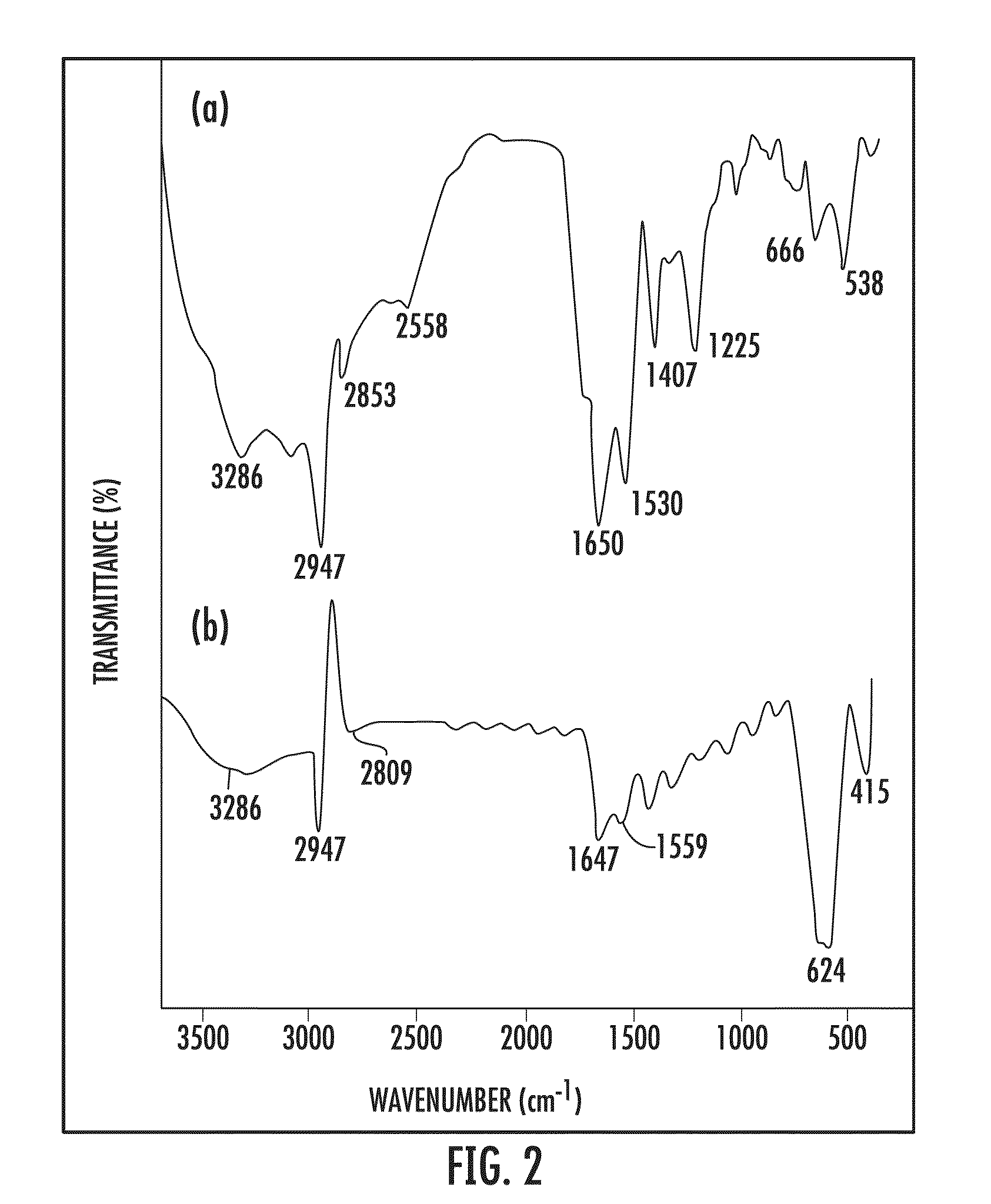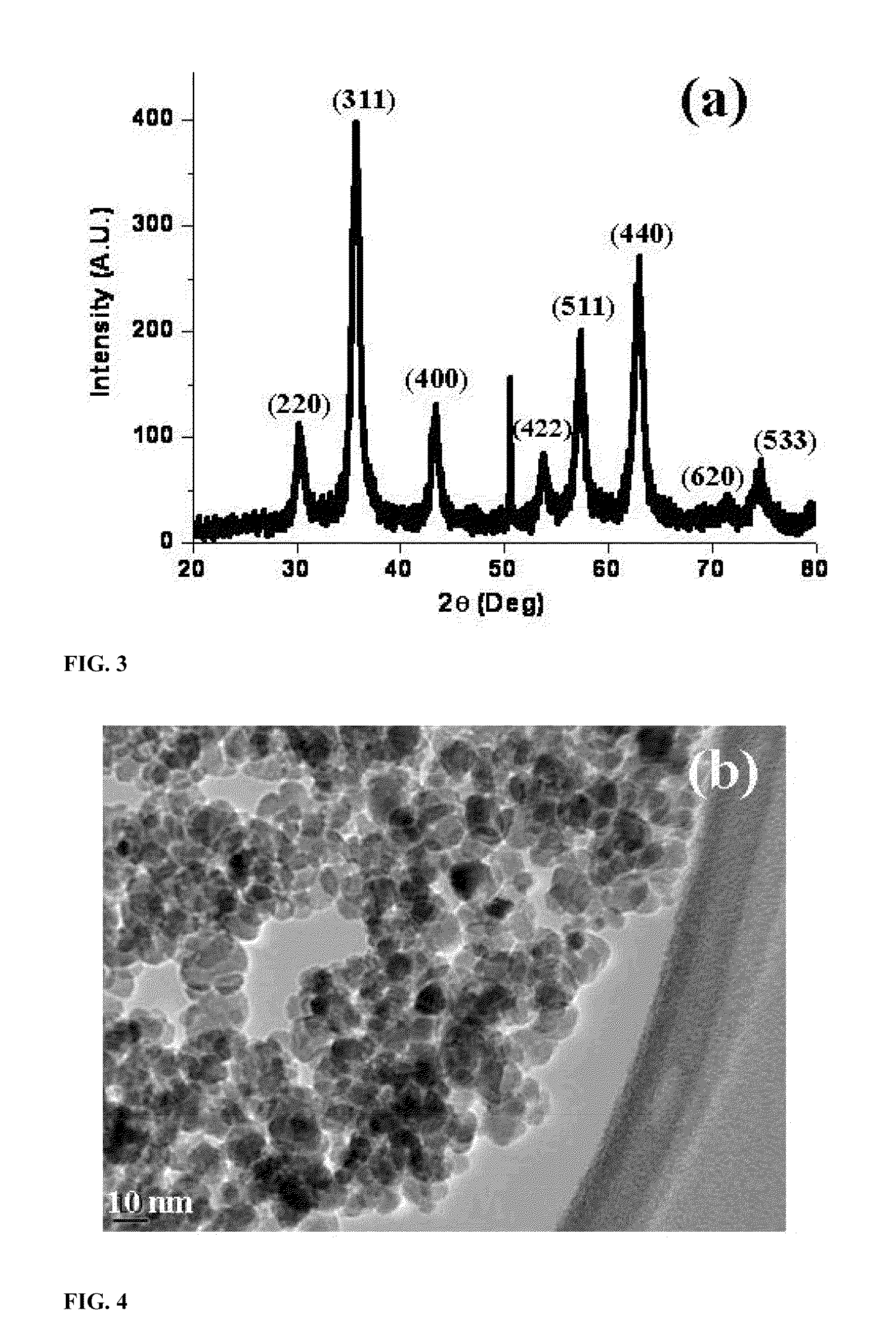Magnetic Nanoparticle-Supported Glutathione as a Sustainable Organocatalyst
- Summary
- Abstract
- Description
- Claims
- Application Information
AI Technical Summary
Benefits of technology
Problems solved by technology
Method used
Image
Examples
examples
[0048]All the solvents and reagents in the Examples discussed below were purchased at the highest commercial quality and used without further purification, unless otherwise stated. Gas chromatography (GC) was used to monitor the reactions. The crude products were identified by GC-MS qualitative analysis using a GC system with a Mass selective detector. CEM Discover focused microwave synthesis system was used to carry out all aforementioned organic transformations.
[0049]Both glutathione and cysteine were tested for Pall-Knorr reaction under homogeneous condition in water medium, to compare their catalytic activity, and glutathione appeared to be more active in comparison to cysteine. A nanoparticle-supported glutathione was used in the following Examples.
[0050]The nanoparticle-supported glutathione used in the Examples shown in Tables 1-4 (FIG. 1), was synthesized as follows: Nano-Fe3O4 (0.5 gm) was dispersed in water (15 mL) and methanol (5 mL) and sonicated for 15 minutes. Glutathi...
PUM
| Property | Measurement | Unit |
|---|---|---|
| Temperature | aaaaa | aaaaa |
| Temperature | aaaaa | aaaaa |
| Mass | aaaaa | aaaaa |
Abstract
Description
Claims
Application Information
 Login to View More
Login to View More - R&D
- Intellectual Property
- Life Sciences
- Materials
- Tech Scout
- Unparalleled Data Quality
- Higher Quality Content
- 60% Fewer Hallucinations
Browse by: Latest US Patents, China's latest patents, Technical Efficacy Thesaurus, Application Domain, Technology Topic, Popular Technical Reports.
© 2025 PatSnap. All rights reserved.Legal|Privacy policy|Modern Slavery Act Transparency Statement|Sitemap|About US| Contact US: help@patsnap.com



